Linderastrychnifolia,wu yao – Radix Linderae,wu yao herb,Linderastrychnifolia,Linderae Radix,Lindera aggregata (Sims) Kosterm
[Medicinal] The root of Linderastrychnifolia (Sieb.etZucc.) Vill., a shrub or small tree of the Lauraceae family.
[Nature and flavor and meridians] Pungent, warm. Enters the spleen, lung, kidney, and bladder meridians.
[Effects] Promotes qi and relieves pain, warms the kidney and dispels cold.
[Clinical application] 1. Used for chest and abdominal distension and pain, abdominal pain caused by cold hernia, and abdominal pain during menstruation.
Linderastrychnifolia is pungent, warming and unblocking, good at unblocking the qi mechanism, and has the function of dispersing qi stagnation and relieving pain. It can enter the lungs and spleen and relieve qi stagnation in the chest and abdomen. Therefore, it can be used for chest tightness, abdominal distension, or stomach and abdominal pain caused by cold evil qi stagnation, and is often used together with costus root. It can also be used in combination with cyperus rotundus, fructus aurantii, and curcuma. This product is also good at dispersing cold and relieving pain. It can be used in combination with fennel, citrus aurantium, etc. to treat abdominal pain caused by cold hernia; it can be used in combination with angelica and cyperus rotundus for abdominal pain during menstruation.
2. Used for frequent urination and enuresis.
Wuyao can also move the kidney and bladder downward, warm the kidney and dispel cold. For frequent urination and enuresis caused by kidney and bladder deficiency and cold, it is often used together with Yiqiren and Chinese yam.
[Prescription name] Taiwan Wuyao, Wuyao (sliced and dried)
[Dosagem geral e uso] Um a três qian, decocados e tomados.
[Comments] 1. Wuyao is pungent and warm in nature and flavor. It moves the lungs and spleen to regulate the stagnation of qi in the chest and abdomen, dispels cold stagnation and eliminates the pain of hernia during menstruation. It can also warm the kidney and eliminate the cold air in the bladder, and is used to treat frequent urination and enuresis.
2. Both costus root and Wuyao can promote qi and relieve pain. They are the main drugs for treating chest and abdominal distension and pain. They are often used together in clinical practice. However, costus root has better qi-promoting power and has the effect of stopping diarrhea when stewed; Wuyao is also good at treating cold hernia and dysmenorrhea, and can warm the kidney and dispel cold to treat frequent urination and enuresis.
[Example of prescription] Simo Decoction (Jisheng Fang): Linderae sibiricum, Agarwood, Ginseng, Areca. Treats seven emotions depression, shortness of breath.
Tiantai Wuyao Powder (Medical Invention): Tiantai Linderae sibiricum, Fennel, Aucklandia lappa, Green Peel, Alpinia officinalis, Areca, Croton, Toosendan. Treats cold stagnation, small intestinal hernia, lower abdominal pain leading to testicles, etc.
Wuyao Decoction (Jiyin Gangmu): Linderae sibiricum, Cyperus rotundus, Angelica sinensis, Aucklandia lappa, Licorice. Treats abdominal pain during menstruation in women.
【Excerpt from literature】《Pharmaceutical Chemistry》: “It has a strong and warm nature, so it can quickly spread qi and disperse stagnation, which is better than Cyperus rotundus. It can disperse cold qi, and the pain caused by coldness will be eliminated; it can dispel evil qi, and the epidemic miasma will be eliminated; it can relieve depression, and the abdominal pain caused by nausea and vomiting in the chest will be relieved suddenly; it can relieve meridian qi, and the paralysis of limbs caused by stroke and the stagnation of blood and qi in the first child will gradually be unblocked, all thanks to its strong qi.”
《Compendium of Materia Medica》: “Its function is the same as that of costus root and Cyperus rotundus, but costus root is bitter and warm, and it can enter the spleen to relieve stagnation, so it is suitable for food accumulation; Cyperus rotundus is bitter and bitter, and it can enter the liver and gallbladder meridians, relieve depression and disperse stagnation, and it is wonderful for depression; this can reverse the evil qi across the chest and reach everywhere, so it is used as an important medicine for the chest and abdomen.”
This product is the dried root of Lindera aggregata Kosterm., a plant of the Lauraceae family. It can be dug all year round, remove the fine roots, wash, slice while fresh, and dry in the sun, or directly dry in the sun. SIS]
[Propriedades]
This product is mostly spindle-shaped, slightly curved, and some of them shrink into a bead-like shape in the middle, 6~15cm long and 1~3cm in diameter. The surface is yellow-brown or yellow-brown, with longitudinal wrinkles and sparse fine root marks. It is hard. The slice thickness is 0.2~2mm, the cut surface is yellow-white or light yellow-brown, the rays are radial, and the annual ring pattern can be seen. The center is darker in color. It has a fragrant smell, a slightly bitter and spicy taste, and a cool feeling. The old, non-spindle-shaped taproots cannot be used for medicinal purposes.
[Identificação]
(1) This product is yellow-white in powder. There are many starch granules, single granules are spherical, oblong or oval, with a diameter of 4~39um, and the umbilicus is forked, herringbone or cracked; compound granules are composed of 2~4 subgranules. The wood fiber is light yellow, mostly in bundles, with a diameter of 20~30um, a wall thickness of about 5um, with a single pore, and the cell cavity contains starch granules. The bast fibers are nearly colorless, long fusiform, mostly scattered, 15-17um in diameter, with extremely thick walls and inconspicuous pores. The diameter of the marginated pit vessels is about 68um, and the marginated pits are closely arranged. The wall of the wood ray cells is slightly thickened, and the pits are dense. The oil cells are oblong and contain brown secretions.
(2) Take 19 grams of the powder of this product, add 30 ml of petroleum ether (30-60℃), let it stand for 30 minutes, ultrasonically treat (keep the water temperature below 30℃) for 10 minutes, filter, evaporate the filtrate, and dissolve the residue in 1 ml of ethyl acetate as the test solution. Take 1 g of the reference medicinal material of Linderae obesa, and prepare the reference medicinal material solution in the same way. Take the reference substance of Linderae obesa, dissolve it in ethyl acetate, and prepare a solution containing 0.75 mg per 1 ml as the reference substance solution. According to the thin layer chromatography method (General Rule 0502), the test solution 44, the reference medicinal material solution 441, and the reference substance solution 3 are respectively applied to the same silica gel H thin layer plate, and toluene-ethyl acetate (15:1) is used as the developing agent. The plate is developed, taken out, dried, and sprayed with 1% vanillin sulfuric acid solution. In the chromatogram of the test sample, spots of the same color appear at the corresponding positions of the chromatogram of the reference medicinal material and the chromatogram of the reference substance.
[Inspeção]
The moisture content shall not exceed 11.0% (General Rule 0832 Method 4)
The total ash content shall not exceed 4.0% (General Rule 2302)
The acid-insoluble ash content shall not exceed 2.0% (General Rule 2302). 【Extract】
Determine by hot soaking method under the alcohol-soluble extract determination method (General Rule 2201), using 70% ethanol as solvent, not less than 12.0%
【Determinação de conteúdo】
Linguolactone Determine by high performance liquid chromatography (General Rule 0512)
Chromatographic conditions and system suitability test Use octadecylsilane bonded silica gel as filler; acetonitrile-water (56:44) as mobile phase; detection wavelength is 235nm, and the number of theoretical plates calculated based on the peak of linguolactone should not be less than 2000.
Preparation of reference solution Take 10mg of linguolactone reference substance, accurately weigh, place in a 100ml volumetric flask, dissolve and dilute to the mark with methanol, shake well, accurately measure 10ml, place in a 25ml volumetric flask, add
methanol to the mark, shake well, and obtain (each 1ml contains 40ug of linguolactone). Preparation of test solution Take about 1g of crude powder of this product, weigh it accurately, put it in a Soxhlet extractor, add 50ml of ether, extract for 4 hours, evaporate the extract, dissolve the residue with methanol in batches, transfer it to a 50ml volumetric flask, add methanol to the scale, shake it well, filter it, and take the filtrate to obtain it.
Determination method Accurately aspirate 10ml of reference solution and test solution respectively, inject it into the liquid chromatograph, and determine it to obtain it.
This product contains no less than 0.030% of lindera lactone (C15H1604) calculated on the basis of dry product.
Demethylisoboldine, determined according to high performance liquid chromatography (General Rule 0512)
Chromatographic conditions and system suitability test, with octadecyl alkane bonded alkali as filler: acetonitrile as mobile phase A, 0.5% formic acid and 0.1% triethylamine solution as mobile phase B, gradient elution according to the provisions in the following table; detection wavelength is 280nm. The number of theoretical plates calculated based on the norisoboldine peak should not be less than 5000.
Preparation of reference solution Take an appropriate amount of norisoboldine reference, weigh accurately, add a mixed solution of methanol-hydrochloric acid solution (0.5→100) (2:1) to make a solution containing 0.2mg per 1ml, and obtain it.
Preparation of test solution Take about 0.5g of the powder of this product (passed through a No. 3 sieve), weigh accurately, put it in a round-bottom flask, accurately add 25ml of a mixed solution of methanol-hydrochloric acid solution (0.5-100) (2:1), plug it tightly, weigh it, heat it to reflux and keep it boiling for 1 hour, cool it, weigh it again, make up the lost weight with a mixed solution of methanol-hydrochloric acid solution (0.5→100) (2:1), shake it well, filter it, and take the filtrate to obtain it.
Determination method Accurately aspirate 5ml of the reference solution and the test solution respectively, inject them into the liquid chromatograph, and determine it.
This product, calculated on a dry basis, contains not less than 0.40% norisoboldine (C18H1gNO4).
Pedaços de decocção
[Processamento]
For uncut pieces, remove the rootlets, separate the pieces by size, soak, slice, and dry.
[Propriedades]
This product is in the form of round slices. The outer skin is yellow-brown or yellow-brown. The cut surface is yellow-white or light yellow-brown, with radial rays and visible annual ring patterns. It is crisp. It has a fragrant smell, a slightly bitter and spicy taste, and a cool feeling. [Identification] [Inspection] [Extract] [Content determination]
O mesmo que materiais medicinais.
[Natureza e sabor e meridianos]
Spicy, warm. It enters the lung, spleen, kidney, and bladder meridians.
[Funções e indicações]
It promotes qi flow and relieves pain, warms the kidney and dispels cold. It is used for cold stagnation and qi stagnation, chest and abdominal distension and pain, qi reversal and shortness of breath, bladder deficiency and coldness, enuresis and frequent urination, hernia pain, and abdominal pain caused by cold menstruation.
[Uso e dosagem]
6~10g.
[Armazenar]
Coloque em local fresco e seco para evitar traças.
Where is the main production area of Lindera aggregata?
It is mainly produced in Zhejiang, Anhui, Hunan and Hubei.
Where is the main medicinal part of Lindera aggregata?
Medicinal parts of Lindera aggregata:
Lindera aggregata is the dried root of Lindera aggregata (Sims) Kos-term. of the Lauraceae family. It can be dug all year round, remove the fine roots, wash, slice while fresh, dry in the sun, or directly dry in the sun. Characteristics of the medicinal parts of Lindera aggregata:
This product is mostly spindle-shaped, slightly curved, and some are shrunk into beads in the middle, 6~15cm long and 1~3cm in diameter. The surface is yellow-brown or yellow-brown, with longitudinal wrinkles and sparse fine root marks.
It is hard. The slice is 0.2~2mm thick, the cut surface is yellow-white or light yellow-brown, the rays are radial, and the annual ring pattern can be seen, and the center color is darker. The aroma is slightly bitter and spicy, with a cool feeling.
How are bird medicines recorded in ancient books?
“Compendium of Materia Medica”: “It is used to treat nausea and abdominal pain, indigestion, epidemics, cold air between the bladder and kidneys, blood and qi in women, and various worms in the abdomen of children.
“Rihuazi Materia Medica”: “It can treat all kinds of qi, eliminate all coldness, cholera, nausea and vomiting, diarrhea, carbuncle, scabies, and relieve cold and heat.
“Compendium of Materia Medica” states: “Wu Yao, with less harmonizing qi and more excretion, is not too strong. It can be ground into soup with Agarwood to treat coldness in the chest and abdomen, which is very stable.
Efeitos
Wu Yao has the effects of promoting qi and relieving pain, warming the kidney and dispersing coldness.
What are the main effects and clinical applications of Wu Yao?
Wu Yao is used for cold stagnation and qi stagnation, chest and abdominal distension and pain, qi reversal and wheezing, bladder deficiency and coldness, enuresis and frequent urination, hernia pain, and abdominal pain caused by cold menstruation. Cold stagnation and qi stagnation syndrome
· Treat chest and abdominal pain caused by chest and abdomen, and often use it with Cyperus rotundus and Licorice.
· Treat abdominal distension and pain caused by costus root, green peel, and Curcuma zedoaria.
Treat abdominal pain caused by cold hernia, and often use it with fennel, green peel, and Alpinia officinalis.
Treat abdominal pain caused by cold menstruation, and often use it with Cyperus rotundus, costus root, and Angelica sinensis.
Frequent urination, enuresis
Treat frequent urination caused by kidney yang deficiency, cold bladder deficiency, and enuresis in children, and often use it with Alpinia oxyphylla and Chinese yam. Use together.
What other effects does Wu Yao have?
The commonly used medicinal diet recipes of Wu Yao are as follows:
· Stir-fried hawthorn 24g, raw barley sprout 30g, bran stir-fried Shenqu 45g, stir-fried Citrus aurantium 24g, ginger roasted Chuan Houpo 24g, Wu Yao 24g, orange peel 120g, old tea leaves 90g. Digestion and appetite, promote qi and relieve stagnation.
Nota: O uso de materiais medicinais chineses deve ser baseado na diferenciação e tratamento da síndrome, e deve ser usado sob a orientação de praticantes profissionais de medicina chinesa. Não os use à vontade, e não dê ouvidos a prescrições e anúncios de medicina chinesa à vontade.
What are the compound preparations containing bird medicine?
Tiantai Wu Yao San
Promotes qi and relieves liver, dispels cold and relieves pain. Mainly treats liver meridian cold stagnation and qi stagnation syndrome. Small intestinal hernia, lower abdomen leads to testicular pain, partial swelling, or lower abdominal pain, white tongue coating, stringy pulse.
Suoquan Pills
Warm the kidney and dispel cold, reduce urine and stop nocturnal emission. Mainly treats bladder deficiency and cold syndrome. Frequent urination, or nocturnal emission Urine, cold lower abdomen, pale tongue, weak pulse
Simo Decoction
Promote qi and reduce adverse effects, relieve chest tightness and dissipate knots. Indications: Seven emotions, liver qi stagnation syndrome. Chest and diaphragm distress, shortness of breath, fullness under the heart, loss of appetite, white fur and stringy pulse.
Suquan Capsules
Tonify the kidney and reduce urine. Used for frequent urination and nocturnal enuresis caused by kidney deficiency.
Weiyangning Pills
Warm the middle and dispel cold, regulate qi and relieve pain, and suppress acid and stop bleeding. Used for epigastric distension or tingling, vomiting and pantothenic acid, gastric and duodenal ulcers that belong to cold stagnation, qi stagnation and blood stasis
Modern research progress on Linderae medica
This product has multiple pharmacological effects such as regulating gastrointestinal motility, promoting secretion of digestive juices, stimulating the cerebral cortex, promoting respiration, stimulating the myocardium, promoting blood circulation, raising blood pressure and relieving pain, anti-inflammatory, and anti-fatigue.
Uso
Linderae medica has the effects of promoting qi and relieving pain, warming the kidney and dispersing cold. Linderae medica is generally used Decoction pieces, decoction. Please follow the doctor’s instructions for specific medication.
How to use bird medicine correctly?
When taking the decoction of Linderae medica orally, the usual dosage is 6~10g.
When used externally, take an appropriate amount of Linderae medica, grind it into powder and apply it to the affected area.
Linderae medica is generally used in decoctions, decoctions are taken, and can also be made into powders or pills for consumption. However, the use of Chinese medicinal materials must be treated according to syndrome differentiation and should be used under the guidance of professional Chinese medicine practitioners. They should not be used at will, and should not be used at will, let alone listen to Chinese medicine prescriptions and advertisements at will. Common Chinese medicine compatibility is as follows:
· Linderae medica with Alpinia oxyphylla and Chinese yam: Linderae medica can warm the kidney and disperse the cold air of the bladder; Alpinia oxyphylla can warm the kidney and consolidate the essence and reduce urine; Chinese yam can nourish qi and nourish yin, and also astringe. The three medicines are matched, the kidney is strong in tonifying urine and reducing urine, and it is not too hot and dry, and it can treat kidney deficiency enuresis and frequent urination. In addition, Linderae medica can also be soaked in wine, and soaked in wine with incense, which has the effect of regulating qi and dispersing cold.
How to prepare Wu Yao?
Take the original medicinal materials, remove impurities, separate the large and small ones, soak until 60% to 70% thoroughly, take out, moisten thoroughly, cut into thin slices, and dry. Sieve away the debris.
Which drugs should be used with Wu Yao with special attention?
The combined use of Chinese medicine and the combined use of Chinese and Western medicine requires syndrome differentiation and clinical individualized treatment. If you are using other drugs, please consult a doctor before taking the medicine, and inform the doctor of all your diagnosed diseases and treatment plans you are receiving.
Instruções de uso
Wu Yao is pungent, warm and fragrant, and can consume qi and hurt yin. Therefore, those with insufficient qi and yin or internal heat should be careful to take it.
What are the precautions when using Wu Yao?
Patients with qi and blood deficiency and internal heat should take it with caution.
·This product has a fragrant smell, a slightly bitter and pungent taste, and a cool feeling. It is best to be tender, powdery, light yellow-brown in cut surface, and have a strong aroma. Use it raw.
·Pregnant women and people with physical weakness should take it with caution.
·Children: Children should take the medicine under the guidance of a doctor and adult supervision.
Please keep the medicinal materials properly and do not give them to others.
Evite usar utensílios de cobre ou ferro para preparar remédios.
How to identify and use bird medicine?
Processed lindera and lindera charcoal
·Raw lindera can relieve pain and warm the kidneys, dispel coldness, and is often used for chest and abdominal pain, shortness of breath, bladder deficiency and coldness, enuresis and frequent urination, cold hernia pain, and dysmenorrhea; after lindera is processed with wine, its function of dispersing and warming is enhanced, and its function is biased towards warming and promoting qi, and is often used for small intestinal qi and running pig qi:·After lindera is fried into charcoal, its astringency increases, and its function is specialized in astringent hemostasis, and is often used for bloody stool and bloody dysentery.
lindera and aconite
·Both medicines are pungent and warm, belonging to the spleen and kidney meridians, and have the function of dispersing cold and relieving pain.
However, Wudao belongs to the lung and bladder meridians, can promote qi and relieve pain, warm the kidney and dispel cold, reduce urine and stop nocturnal emission, and is used to treat chest and abdominal pain caused by cold and qi stagnation, frequent urination, and nocturnal emission. Wudao belongs to the heart and liver meridians, and is highly toxic, can dispel wind and dampness, dispel cold and relieve pain, and is used to treat wind-cold-dampness arthralgia, various cold pains, injuries from falls, anesthesia and pain relief, etc.
Wu Yao – Radix Linderae
Price range: $66.66 through $5,288.00
+ Frete grátisLinderae Radix,wu yao – Radix Linderae,wu yao herb,Linderastrychnifolia,Linderae Radix,Lindera aggregata (Sims) Kosterm, Chinese herbal medicine, alias: Pangqi, Tiantai Linderae, Ai Zhang, Linderae Radix, literary name: Linderae Radix, main effects: promoting qi and relieving pain, warming the kidney and dispersing cold
The Chinese herbal medicine Linderae Radix is a herbal medicine for regulating qi, which is the dried root of the plant Linderae Radix of the Lauraceae family.
The Chinese herbal medicine Linderae Radix is pungent and warm. It enters the lung, spleen, kidney and bladder meridians.
Wu Yao is pungent, warm and fragrant, and enters the lung meridian, the spleen meridian in the middle, and the kidney meridian and bladder meridian in the lower part. It is good at promoting qi, dispersing cold and relieving pain. It can treat pain caused by cold stagnation and qi stagnation in the triple energizer. It is an excellent product for promoting qi, dispersing cold and relieving pain. It can also warm the kidney, dissipate the cold air in the bladder, and treat yang deficiency enuresis and frequent urination.
This product mainly contains sesquiterpenes and their lactone components, alkaloid components, fatty acid components and volatile oils. It has the effects of promoting qi and relieving pain, warming the kidney and dispersing cold.
| Peso | 1 kg, 10 kg, 100 kg |
|---|




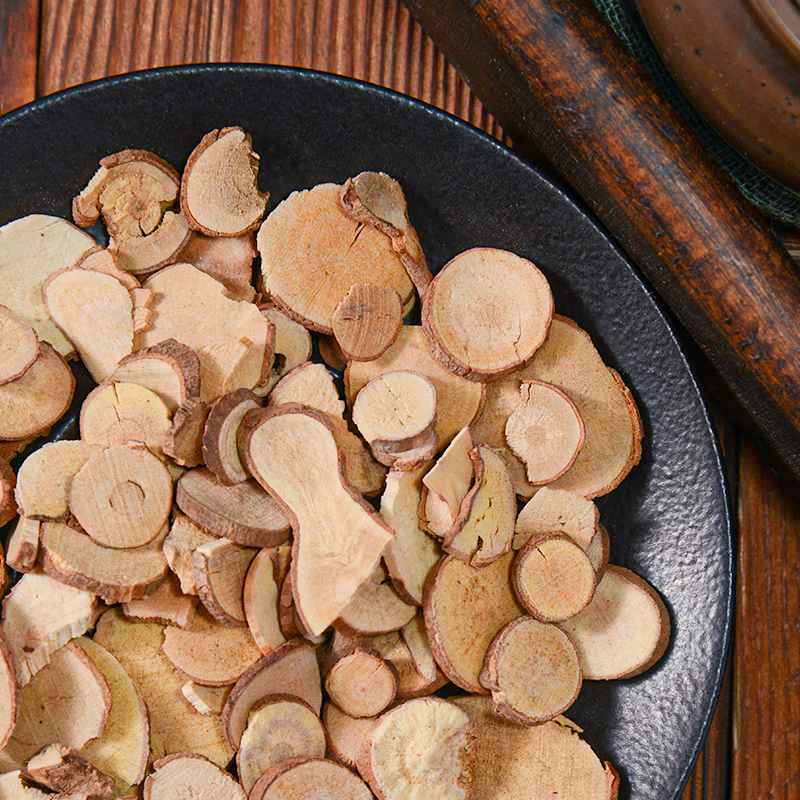
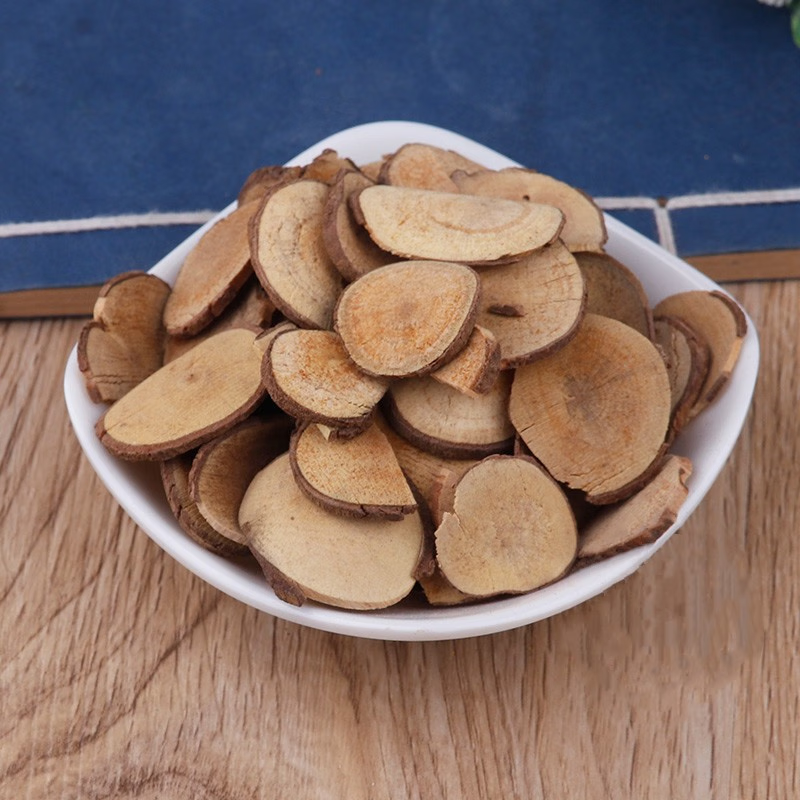


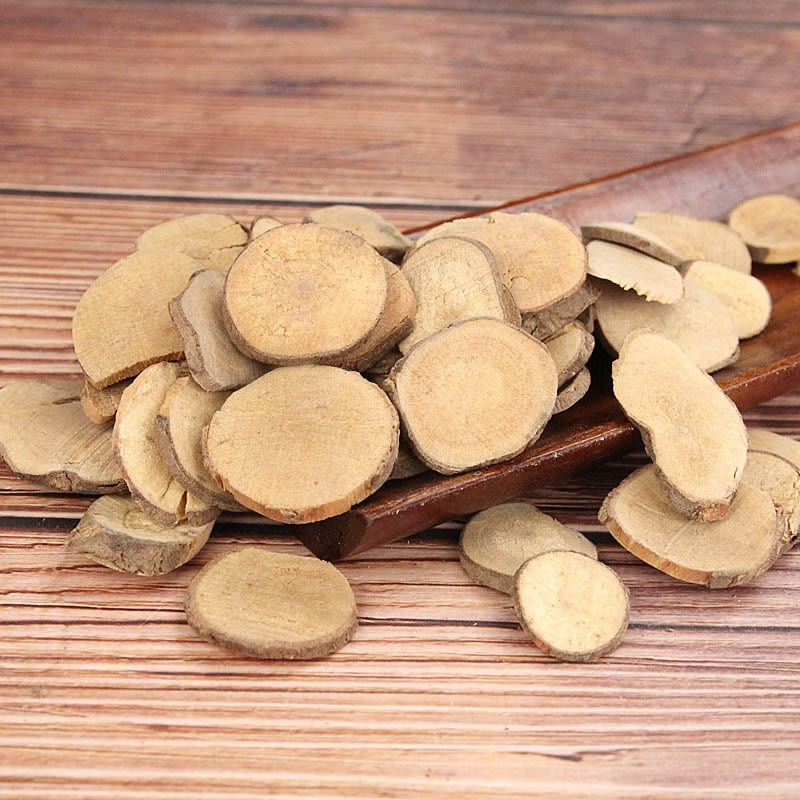


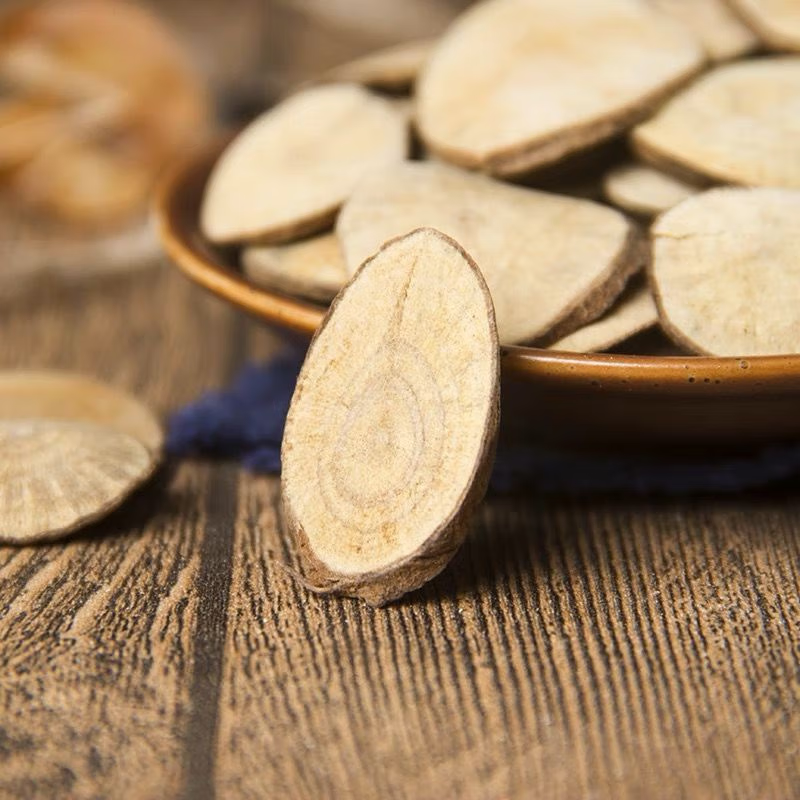
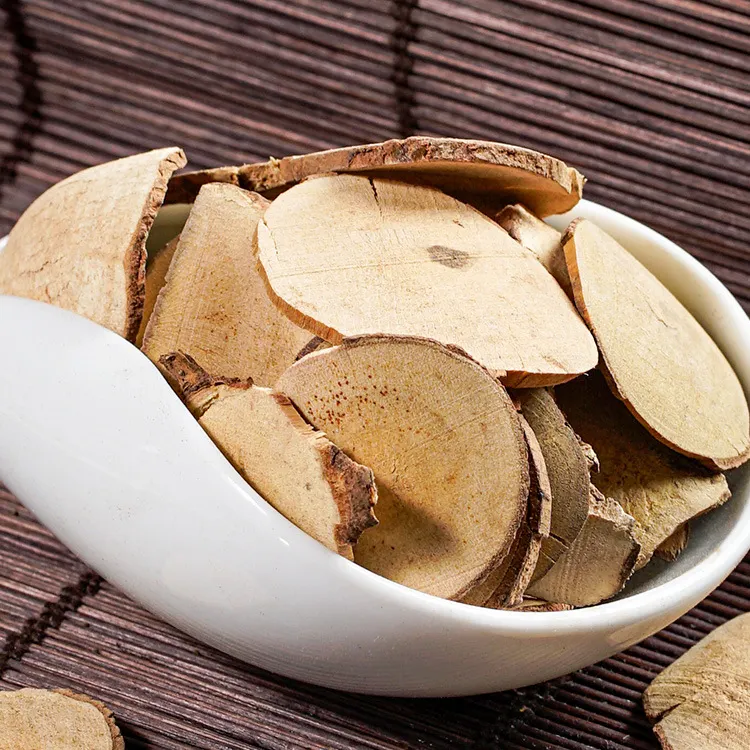

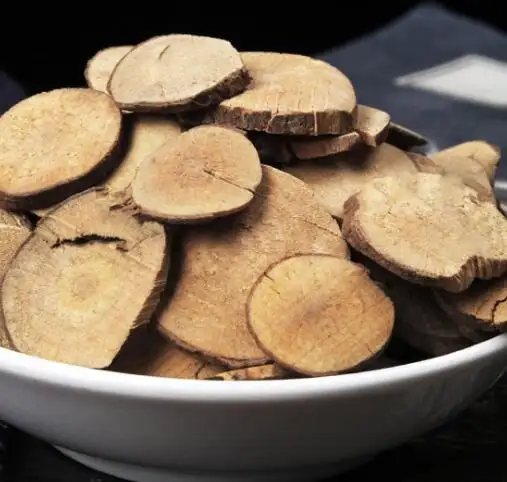
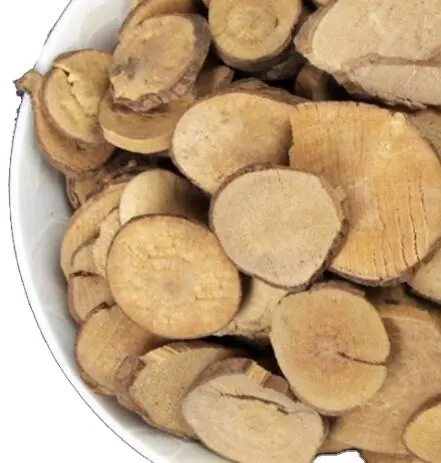
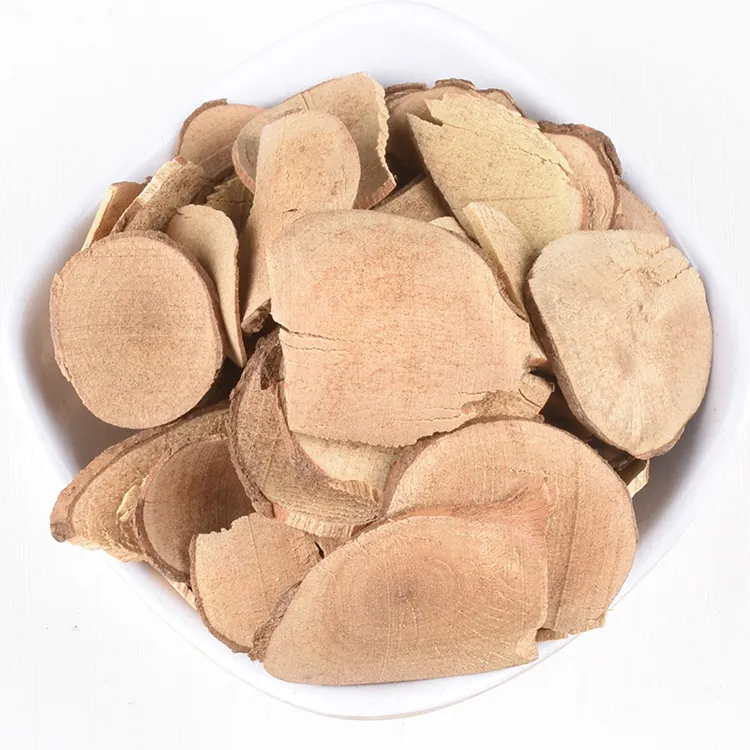
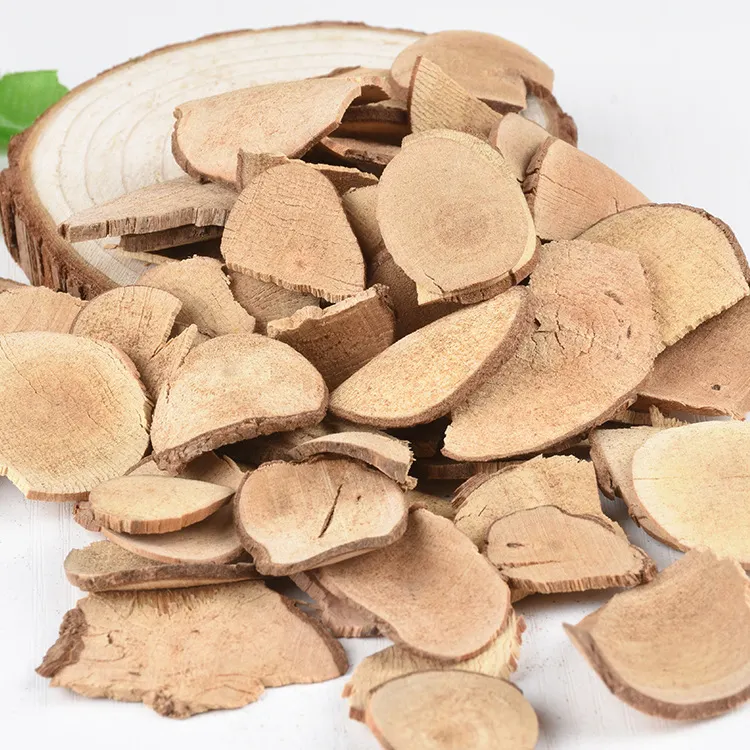
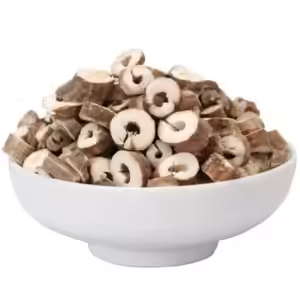
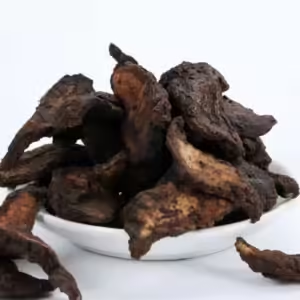
Avaliações
Ainda não existem avaliações.